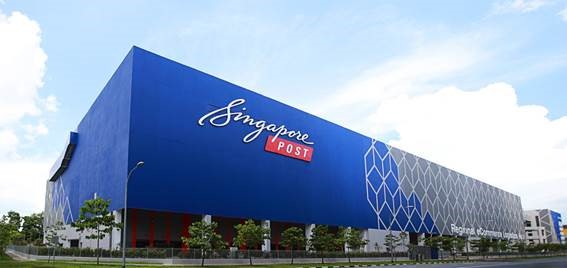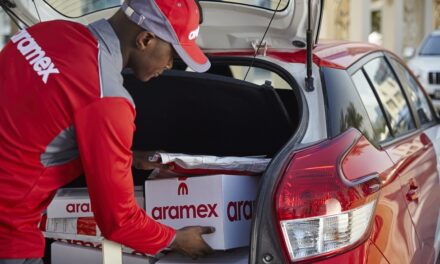
Pioneers on the boundaries of physical and digital mail
James Cartledge speaks with Michael Schrader, EMEA general manager of digital mailroom specialist Top Image Systems about his work with some of the world’s major postal services In the postal world, the digital revolution can be quite a complex affair. On the surface, the opportunities for mailers to cut costs by switching their communications to the digital form are very clear.
For postal delivery companies, the vicious circle of digital mail swallowing up physical mail volumes makes it decidedly less clear what the benefits are in investing in this new communications revolution. Posts are aware that there should be opportunities – 70% of those answering a recent UPU survey said strategically, electronic services are important for their futures – but many are unsure exactly what direction lies their best use of the technology.
In the United States, where First Class Mail volumes have sunk 25% in the last five years in large part because of e-substitution, the US Postal Service has been considering its digital strategy for many months. Paul Vogel, the president and chief marketing/sales officer told his major customers at the end of 2011 that the strategy is still not quite ready for public eyes.
But why would the world’s largest domestic postal service, already crippled by debt, want to even think about speeding up that decline by investing in additional digital and hybrid communication alternatives?
Michael Schrader, something of an expert on the interface between physical and digital mail, says the opportunity lies in the recognition that we live in a paper and digital world, and despite market trends, this mixed media society looks set to continue.
“For the last 15 years or 20 years in this business, all the time we’ve been talking about paperless invoices and the paperless office, and that paper will go away,” he says. “It didn’t. We have had the technologies in place for quite some time, and they are continually improving, but I think that all the predictions were wrong. We still have the paper.”
Gatekeepers
Schrader, the Europe, Middle East and Africa general manager for digital mailroom technology specialists Top Image Systems (TIS), has been working with some of the top postal services in the aforementioned UPU survey on the best digital performers since joining the company in 1999.
Schrader says the big opportunity for postal services is in helping their major customers make sense of the combined flow of electronic and physical mail.
This opportunity has seen the likes of Deutsche Post, Swiss Post, Poste Italiane and other industry leaders that Schrader has been working with over the past decade becoming gatekeepers for the external communications of their major clients.
Swiss Post, which topped the UPU survey, says it scanned 75m pages of paper for corporate clients including Suva, Allianz Suisse and Raiffeisen last year. The company is working towards a future where all its customers will be able to easily choose whether to receive mail digitally or physically.
Schrader’s Tel Aviv-based company specialises in the kind of digital mailroom technology that allows posts to provide that gatekeeper role.
For clients, both physical and digital mail flows into the digital mailroom, but then physical mail is turned into digital mail before a stream of information is then sorted for immediate delivery to the final recipient within the client company. Some of that inbound mail can then even be dealt with automatically by the digital mailroom itself.
“We are providing the platform to classify the information automatically,” Schrader explains. “Companies like Deutsche Post didn’t start with small clients, they started with companies like Deutsche Bank or Bayer, saying ‘we will handle all your incoming mail for you, it doesn’t matter if it comes as letters or as electronic.”

The job of the digital mailroom does not necessarily end once physical mail has been turned into electronic mail, it can include classifying and even answering mail, according to Schrader
Digital mailrooms include equipment to open physical mail and scan it into the digital system, and then also systems to classify the consolidated digital stream for final delivery.
“Delivery is the first step,” he says. “Besides the delivery, with this electronic method you can add information. On paper, it can’t be indexed or classified. On the digital side, you can very easily identify what this letter is, what does it say to your end client, and so on.”
Classifying of that material can be as simple as ensuring it goes to the correct individual within that client company, or even to the point of determining what kind of message it is, how the client needs to deal with it, and what extra information a clerk might need to quickly turn it around.
For example, messages advising of an address change or a subscription cancellation or a change of payment details could all be dealt with automatically, whether on paper or email. Deutsche Post is classifying messages for a banking client into 200 different classes, Schrader says.
“And if we take it to the extreme, these kinds of technologies can even answer automatically,” he says. “So if you take a mobile phone company, today you can cancel a contract and it be that 10 minutes later that company would ask if it could convince you to stay with a new iPhone – and this whole process doesn’t need any manual intervention because you can look in the system at how much revenue this customer brought in, what kind of phone he has, how long he was a customer, so you can decide what to offer him.”
Privacy
Clearly this technology has the potential to veer into the kind of territory that provokes questions of privacy, in the same way Google faces periodic questions in the press about its “reading” of people’s emails to assess which advertising to display alongside specific messages.
Partly, the trust in a postal service’s brand can placate some of the concerns, and Schrader explains that the volume of mail and the automated nature of processing and classifying should give a similar social acceptance of the digital mailroom as has occurred in email.
“Imagine how much private information we are transmitting via emails today,” he says. “For us, it’s very normal, so this is no difference from email, we just need to make sure the government guidelines are in place, and that digital signature technologies are available to make it secure and official.”
Schrader does point out that within corporate digital mailrooms, there will be certain kinds of mail that will remain highly confidential, such as board room communications, but pointed out that as long as the system was set up correctly, those letters would remain unopened.
“Privacy is first of all an issue of how the operational guidelines are built for such a system,” he says.
Competition
While postal services may start small, the opportunities are potentially enormous. Schrader says in Germany where the business is significant for Deutsche Post already, there is only a small percentage of the mail flow going through the ePostbrief system.
TIS sees strong demand from large enterprises engaged with a significant amount of business-to-consumer communications – banks, insurance companies, telecoms firms, utilities.
The leading postal services are now pushing ahead with these services since if they do not, competitors will do it instead – taking away the digital volumes as well as the traditional physical volumes.
Top Image Systems is selling its digital mailroom systems direct to major corporations, but does see postal services as a major market, particularly in the current corporate trend for the outsourcing of in-house mailrooms. The company currently achieves more than half of its revenue in the Europe, Middle East and Africa region, but is also seeing strong business in the Far East and now in the United States. “The main focus today is in Europe and the Far East, but there are major growth potentials for us in the US market as well,” says Schrader.
“There will be competition, there will be new players in the market,” said the TIS EMEA general manager. “That will be competition for the traditional postal organisations. That is what we see in Europe – the traditional postal organisations have to do something to be competitive with those guys that are entering the market.”
For a postal service like USPS, Schrader says the digital-hybrid revolution could mean a second bite of the postage cherry if the they can get to the market before rivals seal it up.
“Postal organisations could earn money for the stamp on the letter, but they could also earn another dollar on this letter by extracting the information automatically and then sending that on to the right place,” he says. “On the other hand, this technology is a threat because if there are companies doing this faster, they will take away this business from the postal organisations.”













